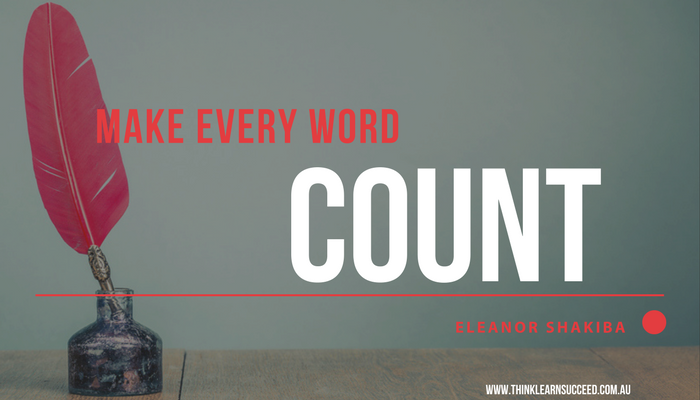
Type ‘keywords’ LinkedIn into Google. What do you see? Your first page of search results will include three types of article. Firstly, keyword and search engine optimisation advice. Secondly, a list of verbs to include in your profile. Thirdly, a list of words not to include in your LinkedIn profile. While this advice will help candidates get their profiles through automated candidate–screening processes, it won’t help them make a great impression. This is because the principles that make for good search engine optimisation are the opposite of principles of influential language use.
While screening software scans for the repeated use of keywords, a human reader scans for difference and emotional connection. This means that smart professionals write their profiles for both computers and for human beings. Given that there is so much content available on how to write for keyword optimisation, today I’d like to explore the art of humanising a LinkedIn profile.
I’m drawing on principles from positive psychology and NLP to do this. Here are four principles that should be kept in mind when assessing the quality of a profile.
Principle one, the human mind is a pattern-detection machine. In other words, people make sense of information by categorising it. This is why smart profile writers fully utilise the patterns already embedded within a LinkedIn profile’s layout. Conforming to those patterns by providing the expected information in the expected fields is common sense. However, not all job candidates seem to possess common sense and some do things like leaving their summary paragraphs blank. Savvy recruiters view this as a sign of an inexperienced or unskilled profile writer.
The takeaway message is simple. An effective LinkedIn profile conforms with norms and expectations regarding the layout of information and content. However, it also keeps in mind a second, seemingly contradictory principle.
Principle two, interrupting a pattern creates an impact. Yes, a surefire way to capture a reader’s attention is to do something different. The trick is to be different enough to stand out without taking things so far that the difference becomes unattractive. How can smart profile writers do this? The answer is simple. By enriching their vocabulary and moving beyond verbs and skill descriptors.
My favourite way to do this is to use adjectives and adverbs to add depth to a profile page. For example, a stand-out candidate would not describe themselves as a “customer service officer”. Instead, they might use the descriptor “caring and empathic customer service professional”. This one change to a headline can make the difference between being the candidate that a recruiter interviews and the one they ignore completely.
Principle three, match values to build rapport. If you know anything at all about NLP, you’ve probably come across the idea of nonverbal matching. However, most people apply this knowledge in a very shallow way, simply matching gestures or body language patterns. Truly successful rapport builders, on the other hand, know that matching values and beliefs is a far better way to connect with another human being. Of course, it’s also a technique that can be applied to writing a LinkedIn profile. Values and beliefs are expressed through our choice of words. When a LinkedIn profile uses language that reflects the values of a recruiter, it is far more likely to make a good impression. For example, a job candidate who describes themselves as patient-centered rather than customer-focused is far more likely to appeal to a recruiter in a health services environment. A small change of language will have a huge impact on the candidates’ success.
Principle four, know when to be specific and when to be artfully vague. Specific language is concrete and descriptive. For example, here’s a specific description of someone’s experience. “I have 12 years’ experience in customer service roles, where I was responsible for responding to up to 30 customer inquiries per day.” Artfully vague language allows the reader to fill in gaps using their own imagination. For example, a consultant might write, “Imagine experiencing complete success.” This is an example of an artfully vague statement being used to direct attention towards a positive outcome. It’s designed to get the reader imagining the benefits of working with the consultant. As a rule of thumb, artfully vague statements are better used in marketing material than in job seekers’ LinkedIn profiles.
About the author of these tips
Eleanor Shakiba teaches smart professionals to build their social and emotional intelligence. Since 1994, she has been teaching talented people – like you- how to think, communicate and behave in ways that build success. Eleanor holds qualifications in Social Anthropology, Applied Psychology, Adult Education and Neuro Linguistic Programming.
